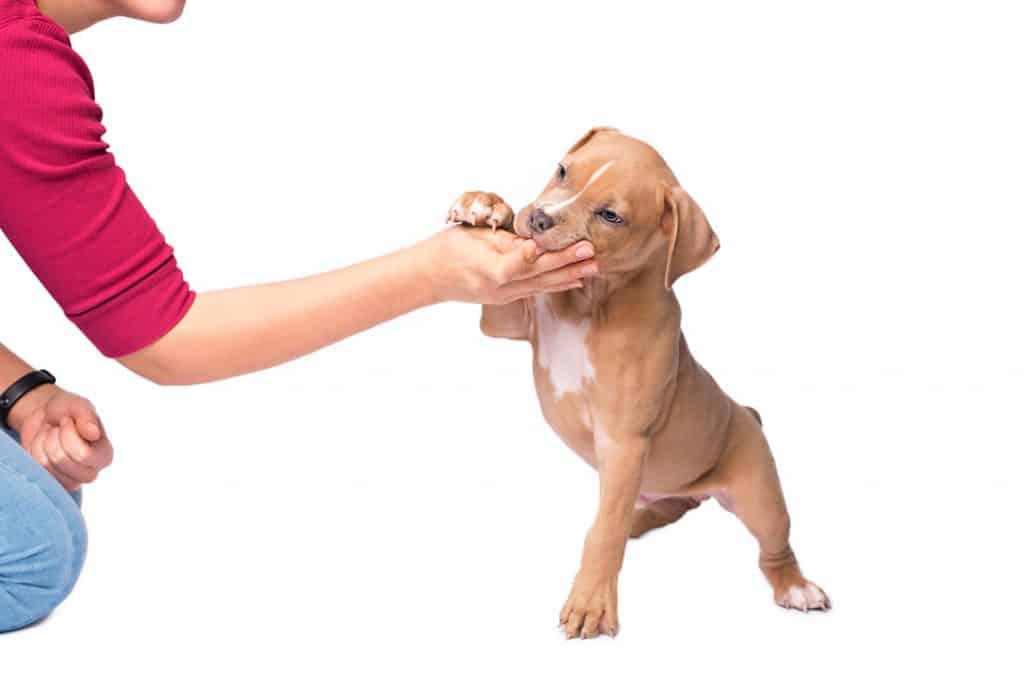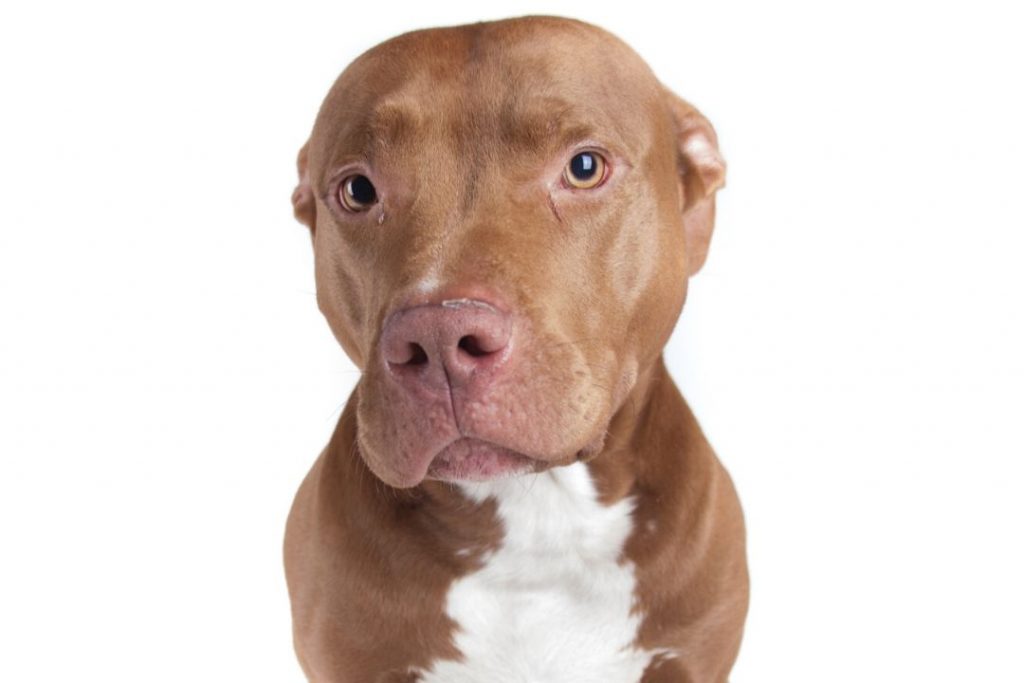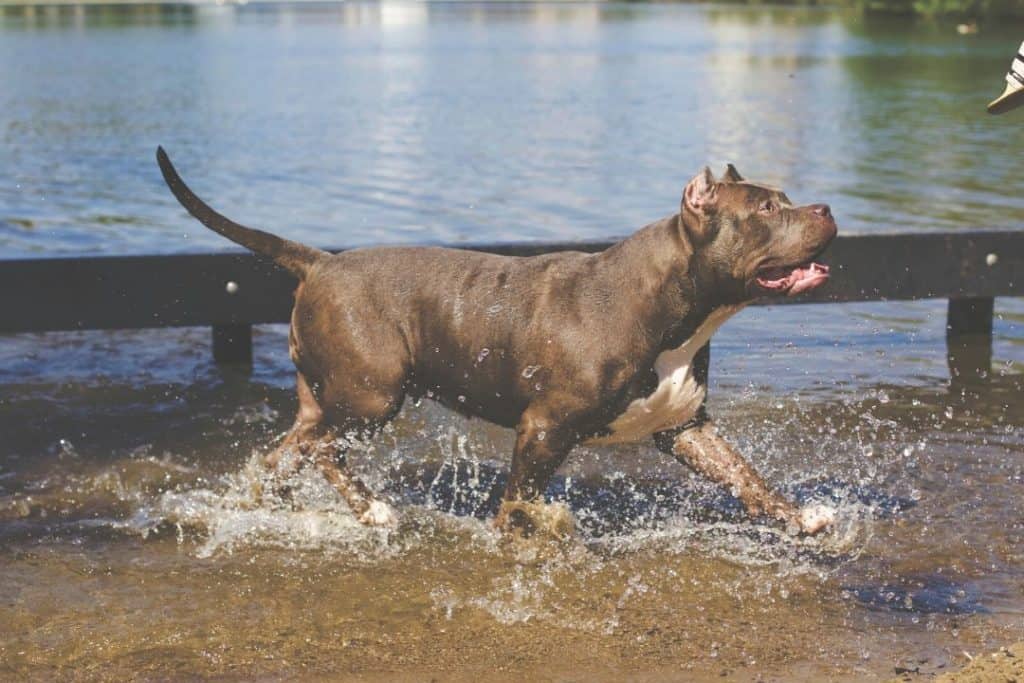This article may contain affiliate links, and I will be compensated if you make a purchase after clicking on my links (at no additional cost to you)
Help! My pitty puppy is in the biting phase.
Fear not, for you are not alone in this puppy biting stage. All dogs go through this phase and it’s actually somewhat similar to a teething baby at times.
Most puppies start teething when they are about 2 weeks old. Your pup will have a lovely set of 28 sharp, puppy teeth.
Around 4 months is when your dog will start to lose their baby teeth and grow adult teeth.
Surviving and successfully training your pitbull on how to behave respectfully is a challenge! In order to break your pup out of any habit, you’ll need patience and consistency.
In this article, we’ll be discussing steps to stop puppy biting, various types of dog biting behavior, the dos and don’ts of training, and a few helpful toys and activities to help redirect your precious fur baby’s desire to chew on you.
5 Steps to breaking the painful teething and biting behaviors:
In this section, we will be discussing various methods regarding stopping puppy biting, and we will be very descriptive so that you, the wonderful doggy parent will know how to firmly, but lovingly implement the following strategies. We’re in this together. Your dog is very intelligent and will catch on fairly quickly if you remain patient, kind, and consistent with training.
Method #1: Redirection
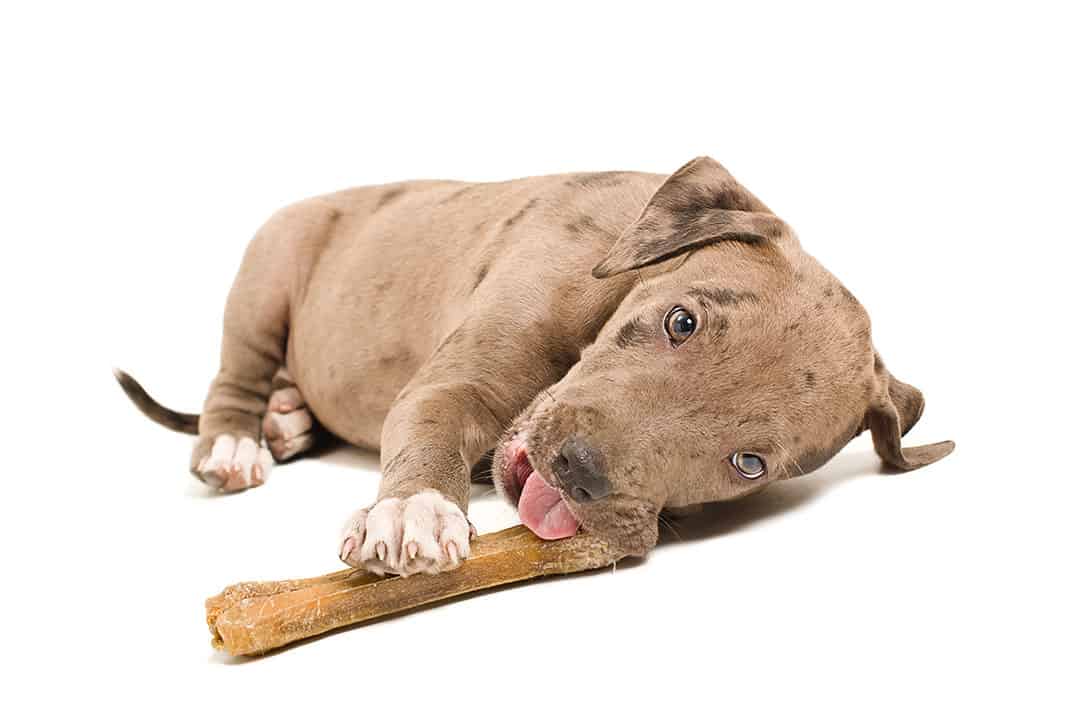
One of the first techniques that is very easy to implement is redirecting your puppy from biting you or chewing on furniture to biting toys or their own dog food.
You can try handing your pup their favorite toy or bone when they start biting. Sometimes any puppy; including Pitbulls, can get bored easily, and like children, they’ll use whatever gets other people’s attention.
Children cry, whine, talk, or throw a tantrum to get more attention. Pitties can’t speak a Human language, but they can get our attention with their mouths!
For puppies who are teething, they might just want some relief, so we can redirect them by providing them with cold pet approved teething toys.
Play toys with different chew patterns and some smooth teething rings can be placed in the fridge and then given to your dog for some comfort and distraction.
This will greatly ease the discomfort that puppies have from growing baby teeth.
Below are links to 3 popular teething and biting distraction toys:
Nylabone Teething Rings
Great for teething and tugging! The Puppy Teething Rings Dog Chew Toy from Nylabone helps new pups and proud pet parents build bonds by playing gentle tug-of-war games, while giving your brand-new ball of fur a safe toy to chew and soothe teething pain.
The chew toy texture promotes proper oral care and keeps puppy breath smelling fresh (or at least less foul.)
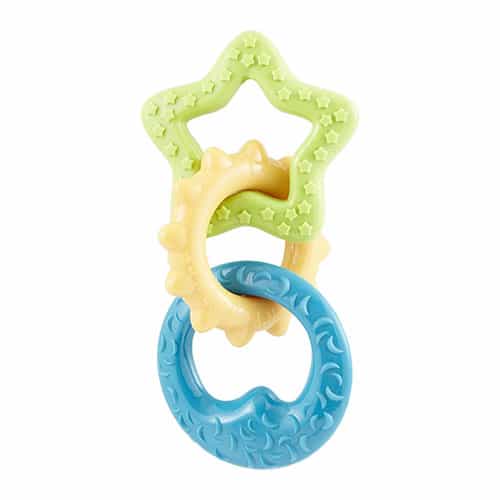
Kong Chew Toy
Make sure that you select the right size kong for your pup. Also, this chew toy can be filled with treats or spray-able peanut butter.
Your pitty will love this toy from puppyhood into their senior years. Every doggy needs a Kong toy!
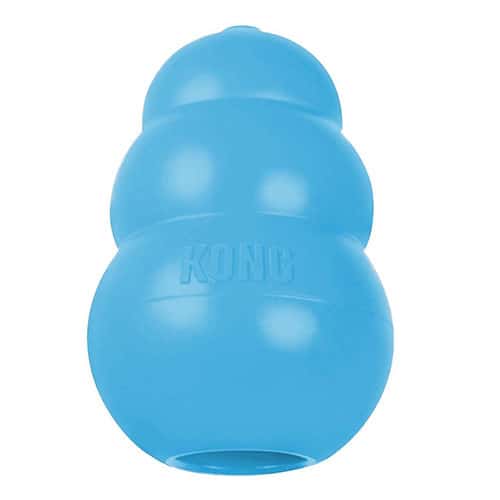
ZippyPaws Loopy Hedgehog 6 Squeaker Plush Dog Toy
This toy falls under the distraction toy category!
If your puppy is done teething and just needs something fun to do, a squeaky toy might be the solution.
Every time your pup is in the mood to play-bite, put this toy in their mouth.
Please remember to supervise your dog when introducing them to this toy, because they might be able to chew a hole in it and you don’t want your pup eating toy stuffing.
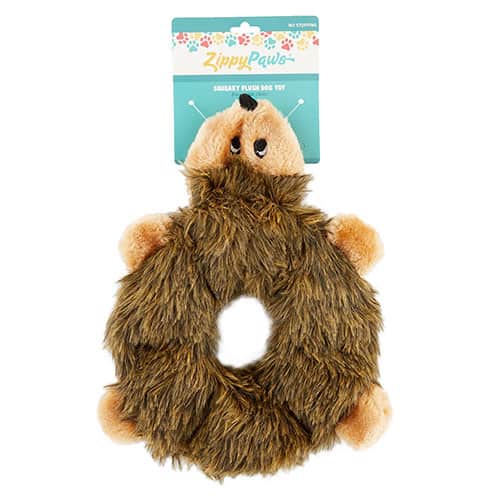
Method #2: Use Easy to Understand Verbal Commands
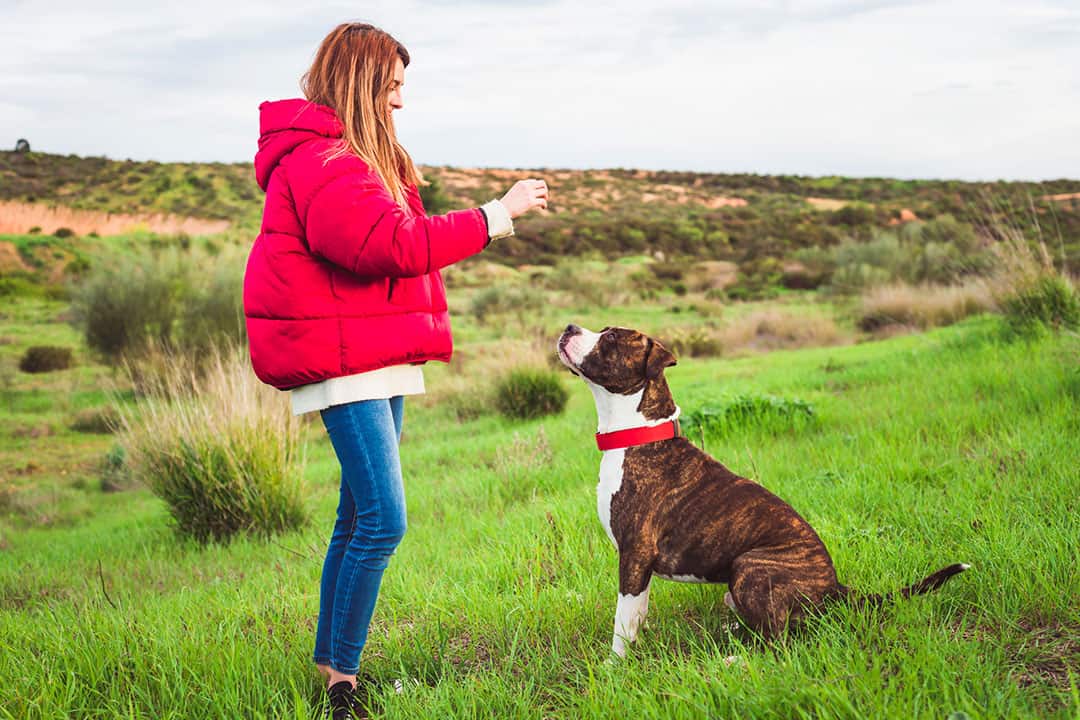
As soon as your dog starts getting feisty and nippy, say “No!” or “No biting,” in a serious tone. Pitbulls are very smart and loving dogs. They want to please their human parents and have fun. So pretty soon, they’ll associate this short phrase and your serious tone of voice with the biting behavior as bad or unliked behavior. The key to your dog understanding these phrases is to use the same short phrase consistently when the situation arises.
Method #3: Stop Interaction and Walk Away
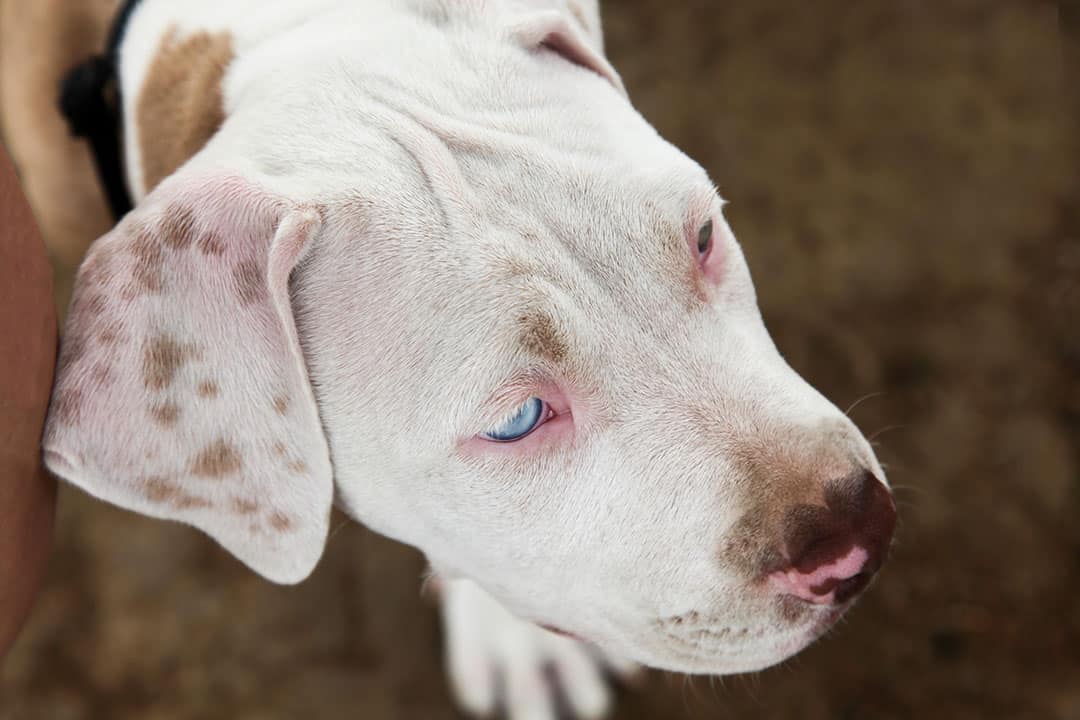
If your Pitbull keeps biting despite you giving a firm “no” or “no biting,” command, you need to stop all interaction immediately.
You might need to even turn your back to your pitty or walk out of the room. This technique falls under the behavior modification category.
This method works excellently because walking away shows the puppy that this behavior will not be tolerated. It also teaches pitties that if your love and attention is wanted, that biting is not an acceptable way to get whatever is desired.
Method #4: Make Sure Your Pitbull is Mentally and Physically Stimulated
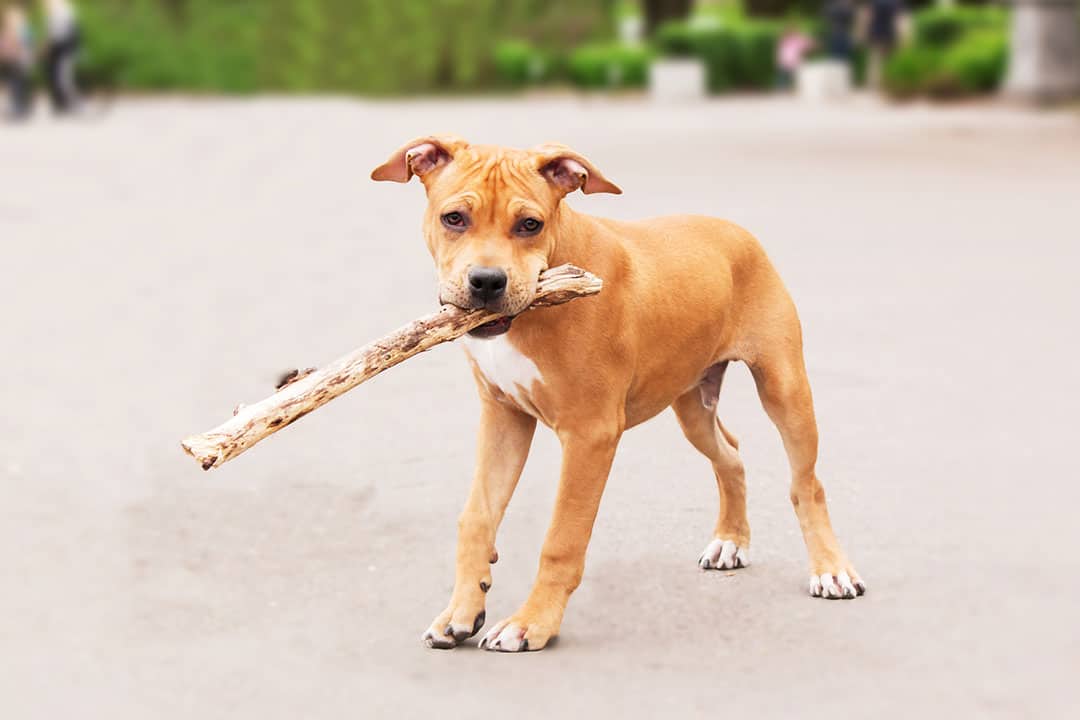
It is extremely crucial to make sure that your Pitbull is getting enough stimulation both physically and mentally, or else you will notice that they tend to be even more mischievous due to boredom.
This breed has a bad reputation in some people’s minds, because of the history of dog fights.
However, any dog that was in dogfights led by their abusive owners were raised and trained that way. That is not their natural behavior.
Pitbulls also known as American Staffordshire Terriers are extremely smart, loveable, great for families, full of energy, and extremely trainable.
Their high energy levels and intelligence means that they need to be walked several times a day. They also need to have quality time with their owners and close family and friends.
To keep them stimulated mentally, consider using puppy chew toys, or some puzzle toys that dispense treats.
Other activities that fall under both categories are agility training, show dog training, scent training, and service or therapy dog training.
Another great way to make sure that your dog’s energy is being used up enough is by having your pitty involved in a doggy day camp.
This is excellent because your dog will be socializing with other well-socialized dogs. This will help your puppy to bite way less because dogs teach each other what’s too hard and what’s appropriate.
Therefore, being enrolled in a doggy camp is perfect for Pitbulls who may live in apartments that need to get out more and burn some energy off. Dog camp also helps their behavior in crowds of people and pets.
Method #5: Make Sure You are Feeding Your Pitty Enough
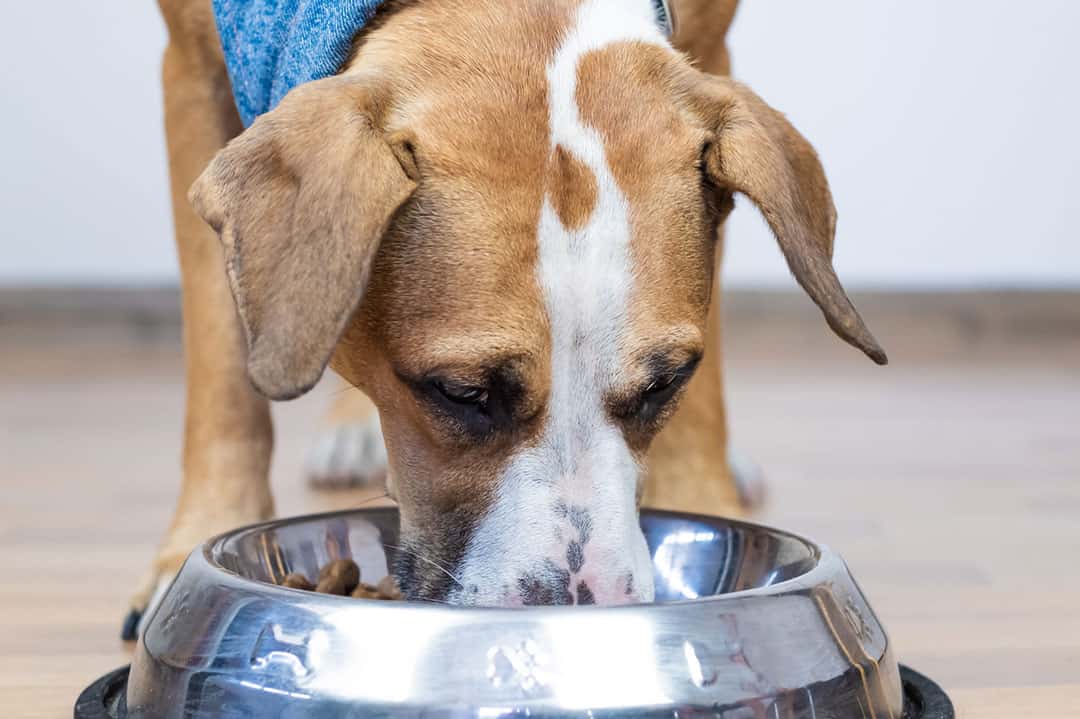
One of the most common questions asked to veterinarians and their staff is about nutrition and how to know if their puppy is being fed enough.
This is an excellent question and it could be part of the reason why your precious pup is biting more than usual.
When puppies are born, they usually get their nutrition from their biological mom by latching onto her nipples for milk.
In human homes, if they are hungry, going to their food bowl and play biting your hand or ankles would be expected since they can’t speak human and say, “Hey! I’m not trying to play, I’m just still hungry!”
Usually, a combination of methods 1-4 along with patience and consistency is all it takes to train a Pitbull puppy not to bite.
Therefore, if you are already doing techniques 1-4 and aren’t seeing enough progress, I recommend that you reflect to make sure that everyone in the house is on the same page with training consistency.
At this point, I also recommend calling your vet to make sure that your puppy is getting a wholesome diet and the right amount of food needed on a daily basis. A growing puppy with a full tummy is a happy puppy!
A few additional training tips to keep in mind:
- Do: Praise your dog both verbally and with treats when they are exhibiting good behavior. This will give them motivation to want to please you with even more good behavior.
- Don’t: Run away or scream when they nip at you. Puppies think that yelling and running is a form of you still playing with them. These responses from owners and children will over stimulate them or show them that you are shy of them when they are in a nippy mood. You always want them to know that fun time is allowed, but you and others within the same household are in charge.
- Don’t: Hit your puppy for nipping you. Hitting your puppy can lead to them developing an unhealthy fear and anxiety when interacting with you.
- Do: Ask for help and advice from other dog owners and from your veterinarian. Sometimes your puppy may need more help in certain areas of training than others. It’s nothing to be ashamed of. You are not a bad pitbull owner. Just keep reaching out for advice whenever you need it. You’re never alone in this puppyhood journey.
In most cases, these 5 steps are all you really need to break your puppy out of the biting phase. There are rare occasions when some puppies will need extra training.
If your pitty is still nippy after 6 to 7 months of age, it would be wise to consider intensifying the training by attending a puppy basics class with your pitty.
Another option is to have a veterinary behaviorist help, but usually they are only needed in more extreme cases. Most of the time, basic training is sufficient.
Furthermore, the 5 steps presented above along with consistency, loads of patience and some awesome chew toys are what gets most puppy owners through this biting phase.
Conclusion
Remember this phase is only temporary and every puppy goes through this. If you stay firm in your training with your pitbull, you will see the results of your hard work!
Pitbulls are highly intelligent and a phenomenal addition to any family. Before you know it, this phase will be long behind you and your furry companion.

Amanda is a vet tech and a passionate blogger who loves writing about animals, nature, and the life sciences. Her mission is to fully inform you about all your pet ownership questions and concerns.

